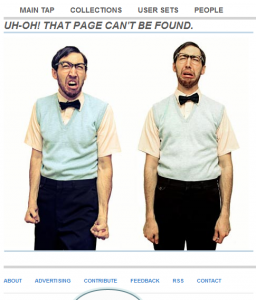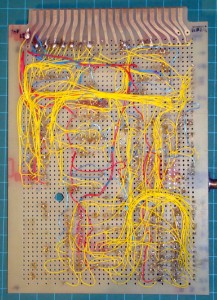 In the 1967 movie “The Graduate,” Mr. McGuire (Walter Brooke) takes young Ben (Dustin Hoffman) aside at his graduation party:
In the 1967 movie “The Graduate,” Mr. McGuire (Walter Brooke) takes young Ben (Dustin Hoffman) aside at his graduation party:
Mr. McGuire: I just want to say one word to you – just one word.
Ben: Yes sir.
Mr. McGuire: Are you listening?
Ben: Yes I am.
Mr. McGuire: ‘Plastics.’
Ben: Exactly how do you mean?
Mr. McGuire: There’s a great future in plastics. Think about it. Will you think about it?
Ben: Yes I will.
Mr. McGuire: Shh! Enough said. That’s a deal.
This short scene served to underscore the divide between the young and old generations of that age. The term ‘generation gap’ had just recently been coined. Today, advice is still given, and because of “The Graduate,” it bears much of the generational divide and paternalism that separates adviser and advisee. So it is with considerable unease that I offer my advice to students of design who are concerned about their future, post-graduation. Just one word: Web.
Old Guys Do Print
We know that the jobs for fresh graduates are in the digital realms, not in print. A couple of years ago NSCAD design grad and Halifax designer Jeff White posted an entry on his website called “How to Get a Job as a Designer:”
- Don’t email all of the companies at one time.
- Find out the names of the hiring person at each company you want to work at and address us individually. With the web, it’s really not hard, and shows some initiative on your part.
- Don’t email us a big PDF of your work. Many of us receive a big chunk of our email on a handheld device, and downloading a 3MB PDF is a hassle, even over 3G.
- There is next to no work for print designers in Halifax at this time. You’ll need (a lot of) web experience to really get in the door. I’d suggest spending the next few months honing your web design skills. Put together a killer portfolio online, find some non-profits looking for a designer, and go after them. We’re all looking for designers with fresh ideas who also understand how to code XHTML/CSS/Actionscript and everything else. Being a multi-talented designer will keep you employed.
Yet, for reasons I cannot fathom, the majority of students seem to be avoiding digital media. Real media is all the rage: the Craft Division can’t keep up with the demand for “book arts” courses. In design, print and product design are the stars of the show.
Design graduates who are qualified to do web design are reporting back to us that they have been successful landing web design work, and striking-out in their attempts to break into print and other design areas. The reason for this is simple: ‘old guys’ do the print stuff. They have years of experience and they’re unfamiliar with web design. So for students in design school, the key to their future success is one word: Web.
404 Course Not Found
Around the same time as his “How to Get a Job” posting, Jeff discussed “The State of Design Education in Nova Scotia.” I consider Jeff a very knowledgeable commentator—he’s taught two of our web design courses. In his post, he criticized design educators in general and NSCAD in particular for not paying enough attention to web design:
One thing a former student mentioned was the need for a more intensive studio-level course in web design. I couldn’t agree more. A dedicated course in web typography…is also absolutely essential…
…So what can we do? As industry members we have a responsibility to push our educational institutions to provide up-to-date and appropriate courses for students. We’re the ones who will reap the benefit. Just the other day I sat in the office of the president of a major local web developer who was crying for at least two web designers with front end coding (XHTML/CSS/Javascript) capabilities. I was able to think of only one person and he’s not even from our city. Industry groups like the GDC and ACIMA also need to get more involved in the students side of things, and the student side of ACIMA is something I’m going to be working towards next year. The GDC doesn’t seem to have much interest in the web at all, but if enough of us got involved, maybe we could change that.
NSCAD’s Bachelor of Design program has a web design course that is a requirement for graduation. It teaches students XHTML/CSS and how to create web standards-compliant websites. But Jeff has a point. Where are the other web design courses that provide more in-depth opportunities and experiences?
Intermediate Interactive Design

It’s no wonder that some people complain that NSCAD doesn’t educate its designers in web design: it seems as though only one, the Intro course, is ever taught. Intermediate Interactive Design is the follow-on course to the required introduction course, and we offer it every year. I teach the course when I can, and I love it. The course is an examination of the historical and theoretical foundations of interactive design and communication, with practical studio projects, such as learning how to install and develop websites using a popular open-source content management system, Joomla. We read and discuss some of the seminal articles in hypertext, user interface and information architecture theory and practice. Students have opportunities to learn new software and techniques, and to apply this knowledge to solving practical problems.
The course last ran in 2009 and may not run in 2011. But don’t blame NSCAD: the course was offered in 2010, and when only five students enrolled, it had to be cancelled.
The course is being offered again in Winter 2011 but only four students have enrolled. It risks cancellation for the second year in a row.
There is only so much that we, those of us from the older generation, can do to encourage young people to benefit from our mistakes and take advantage of our insights. When we do this too forcefully, we risk sounding paternalistic, or, even worse, irrelevant. Students know that they will leave university heavily in debt, and because they are paying for their education with much of their own hard-earned cash, they expect value for their money. And at the moment, students don’t seem to value web design.

